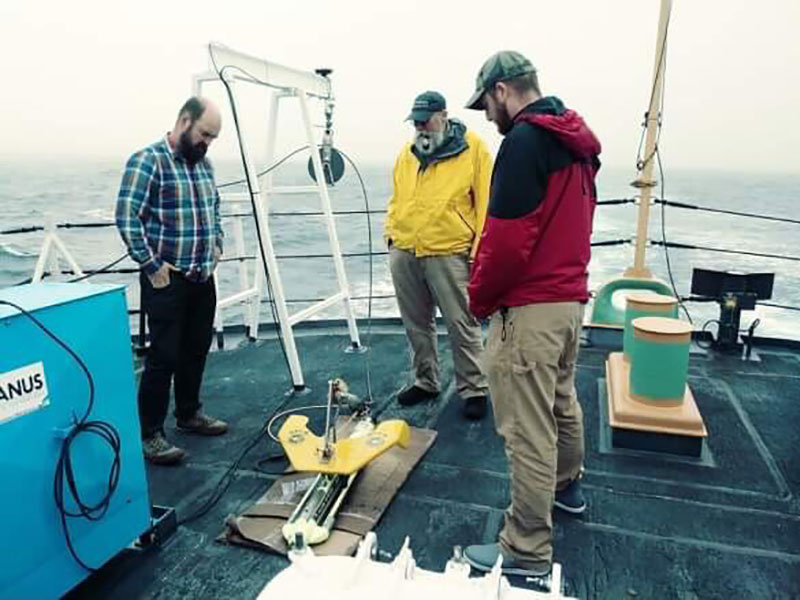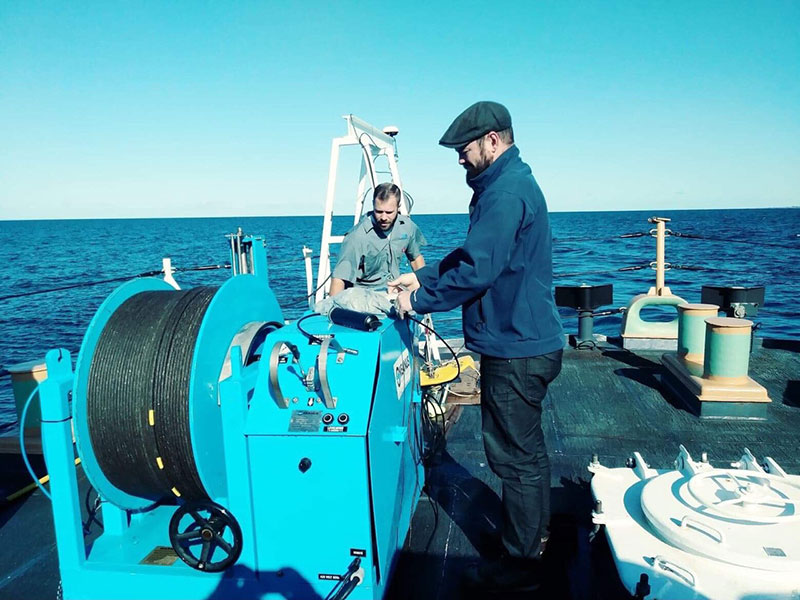
By Beth Crumley, Assistant Historian, U.S. Coast Guard
September 20, 2019

The towfish on deck, prior to being launched. Image courtesy of the Search for the U.S. Revenue Cutter Bear. Download image (jpg, 125 KB).
Several months ago, when there was a scant possibility that I might be able to join the expedition to find the U.S. Revenue Cutter Bear, I was thrilled. As a Coast Guard historian, I knew the importance of this search. Bear served in the Arctic for 41 years, before joining the Byrd expedition to the Antarctic for both the 1933 and 1939 expeditions. Upon her return in 1941, she was refit and assigned to the Greenland Patrol. Bear is nothing short of iconic, the Coast Guard’s most famous cutter. Both NOAA and the Coast Guard hoped to find the ship, and there was a slight chance I might be able to join the search. As that slight chance grew into a real possibility, then an assignment, I was absolutely thrilled...and equally terrified.
I have been to sea before, as part of a NOAA expedition, but my role was strictly that of a historian. I was included to provide “historical background” on several shipwrecks. This mission is different. I am assigned to the survey team.
On the first day of our journey to the search area, I was introduced to the winch and towfish as the NOAA team worked to integrate those systems into those of the cutter. The second day, my training began in earnest. I began to learn to read the data and the sonar “waterfall,” and to input data. I quickly learned that these operations require the technician to be able to pay attention to several different sources of information concurrently. Said CSA employee John Bright, “It gets hectic.” Luckily, he has been a very patient instructor, answering a myriad of questions.

The winch used to raise and lower the towfish. Image courtesy of the Search for the U.S. Revenue Cutter Bear. Download image (jpg, 605 KB).
My on-the-job training continued. Turns are, by far, the most nerve-wracking of tasks. I sat in front of the Sonar Pro display, trying to concentrate on the altitude of the towfish, as well as the speed of the vessel. Both are integral to a successful turn. If the cutter slows too much or too quickly, the towfish falls towards the ocean floor. Sitting at that workstation required me to radio the member of the NOAA team working the winch. “Cable in” to raise the towfish, “cable out” to lower the fish in the water column.
The phone in the dry lab rang as the bridge called to indicate the start of the turn. As I struggled to keep the towfish at an acceptable altitude, I also had to start to log data (a task which required inputting data into two separate programs). I then had to call for an update on the amount of cable which was out, then input that into the correct program...all the while watching vessel speed and towfish altitude through the turn. My great fear was that the towfish hit the seafloor on my watch.
It has not been easy...it is one of the most challenging things I have ever done. That said, it IS rewarding to begin to grasp the intricacies of the operation and to feel a part of the survey team. I am truly thankful for the patience of those who are training me. I won’t say that I am not nervous about returning to survey operations...but I AM looking forward to it.